Mary Ann Glendon explains poet’s spiritual journey
What does a Wallace Stevens, a “poet who is generally considered to be the epitome of the post-Christian poet” have to do with beauty and the Catholic imagination?
So posited Mary Ann Glendon, Learned Hand Professor of Law at Harvard and former United States Ambassador to the Holy See, as she began the concluding keynote of the Center for Ethics and Culture’s 17th Annual Fall Conference, entitled, “You are Beauty: Exploring the Catholic Imagination.”
Intrigued by Paul Mariani’s biography of Stevens that tells of his lifelong interest in things Catholic and contended claim of his deathbed conversion, Glendon sought to discern why Stevens’ poetry speaks powerfully to many Christians and whether Stevens had a Catholic imagination after all.
She traced five movements of Stevens’ spiritual journey: early rejection of the pious faith of his Protestant ancestors, search for something that would suffice to replace religion, determination that imagination could suffice, reexamination of his assumptions, and possible entry into the fold before his death.
First, Glendon explained that Stevens grew up in a devout Protestant household but drifted away from the faith at Harvard. His sonnet rejecting Christianity, however, was met with the critique of one of his mentors, George Santayana. Although Santayana was a self-described “Catholic atheist,” he protested that the young poet had underestimated the beauty and insight Christianity offered.
Stevens went to law school, began a career as an insurance agent, married, and continued writing poetry, for which he began to receive recognition at age 36.
Glendon focused on his poem “Sunday Morning,” often described as “hedonist’s elegy for Christianity.” She highlighted its ambiguities, saying, “This is a woman who’s deciding not to go to Church on Sunday morning, but she’s fretting about it a lot more than most of us do.” The woman’s thoughts and feeling are not unfamiliar to many people. Glendon concluded that the poem is “too ambivalent to be characterized merely as an elegy for Christianity. If it’s an elegy for something, it’s probably an elegy and an internal reverie about losing the Christianity that Stevens gave up as a young man.”
She continued, “‘Sunday Morning’ was really the beginning of a lifelong search on Stevens’ part, and a search where he was far more preoccupied with religion than most of the biographers have given him credit for.”
Stevens entered into a long period of searching for something to replace religion. He evaluated the claims of Marx, Freud, and Nietzsche, battled depression and the disappointment of an unhappy marriage, immersed himself in work, and produced few poems.
Suddenly, at age 55, he embarked on an intense period of creativity and produced what many consider to be his greatest poem, “Idea of Order at Key West.” In this poem, the narrator and a silent companion listen to a woman singing as she walks along seashore. The conventional interpretation is that the singer as creator imposes order on chaos of natural world. Glendon pressed, “What are we to make of the questions that are left hanging in the poem?” She wondered about the silent character, Ramon, to whom the most important questions are directed, and hinted at a possible connection to Santayana.
During the third stage, Stevens seems to have decided that imagination could fill the role once played by religion. He experimented with new forms in his poems, which in this period are often compared to abstract paintings. Thematically, his poetry increasingly explores the relationship between imagination and reality. Although Stevens wrote, “I think poetry is a concept as great as the idea of God,” Glendon maintained that even then he did not stop questioning and desiring something new.
In the fourth stage, Stevens’ search took a surprising turn when at the age of 70 he began to reexamine his assumptions. For example, he considered his recent poems about reality and the imagination as marginal in comparison with his earlier poems. Glendon then examined three poems demonstrating his reconsideration of religious ideas: “Final Soliloquy of the Interior Paramour,” “To an Old Philosopher in Rome,” and “St. Armorer’s Church from the Outside.”
A breakthrough came when Stevens viewed images of a chapel designed by artist Henri Matisse. Glendon explained, “Finally, for the first time, he was able to see how the ever-ancient, ever-new could be represented, made vividly present, for a new generation.”
Glendon continued, “Right until the end he seems to have been confused about religion as anyone else in the modern world, but a lot more concerned about it than most people.”
Finally, a chaplain in the hospital allegedly baptized him and gave him communion. Stevens’ only daughter strongly contested this conversion account. “What I would say,” added Glendon, “is that there are countless statements and musings in Stevens’ poems, letters, journals … that make the story of the Catholic conversion quite plausible.”
Returning to her initial question of whether Stevens had a Catholic imagination, Glendon stated, “I would find it very difficult to say he had a Catholic imagination in the sense that many people give to that word—that is, the idea of finding the presence of God in things, a sacramental, an incarnational imagination. Stevens is much more about absence than presence. But if someone is that preoccupied by absence, there’s something going on there.”
She continued, “What accounts for the immense attraction that many people with a sacramental imagination do have for Wallace Stevens?” The answer could be, she said, that everybody likes good poetry. She pressed further, “Stevens’ poetic imagination was so powerful, and his gift for language was so strong, that it enabled people with a sacramental imagination to see the grandeur of God—in Hopkins’ words—even though Stevens could not see it himself.”
Glendon concluded, “Stevens’ sense of Beauty … was so strong that it not only hinted at the presence of God to many readers, but even toward the end of his life, it enabled him to reach aesthetically a destination he could not reach intellectually.”
Stephanie Reuter is a junior studying PLS and theology. If you are interested in exploring why Stevens’ poems are compared to modern art, she recommends reading, “Thirteen Ways of Looking at a Blackbird,” “Tea at the Palaz of Hoon,” “Of Mere Being,” or “Anecdote of the Jar.” Please talk poetry with her at sreuter@nd.edu.
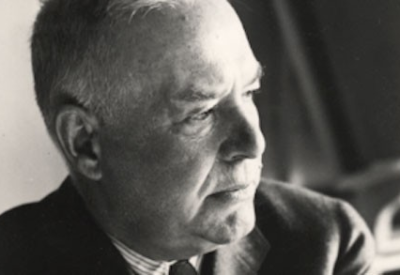
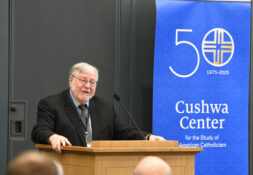
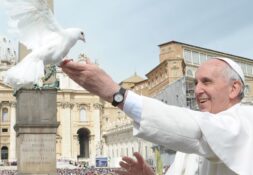
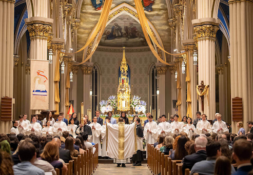
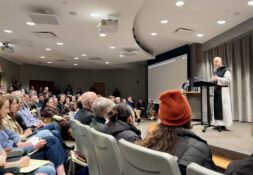
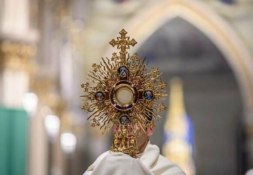

Leave a Reply